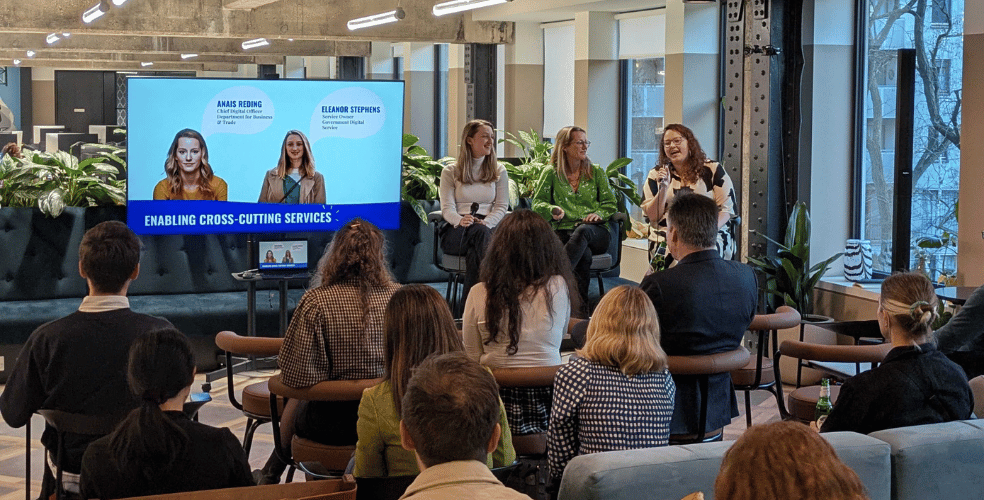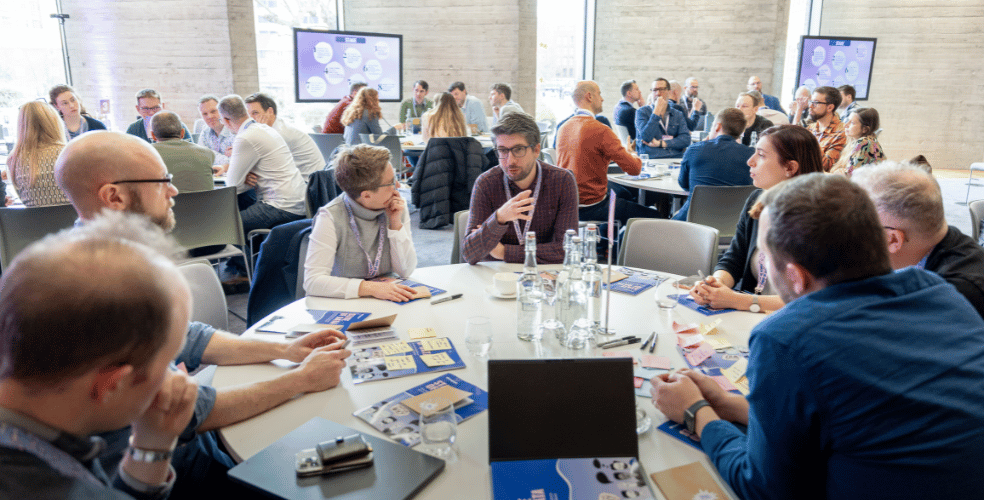Despite appearances to the contrary, I’m not really (at all) a data and digital nerd but a regeneration nerd. From starting my career in Darford/Kent Thameside at the start of its journey towards being a development corporation, to interviewing politicians, civil servants and developers as part of my MSc thesis on the Thames Gateway, to being a (very minor) part of the team that set up the London Legacy Development Corporation, development corporations and large scale change run through me like a stick of rock.
But since the Thames Gateway, we haven’t really had a large-scale approach to creating new homes and communities, however, a new generation of new towns is approaching.
The original garden city and new towns movements were a response to radically improve the health and well-being of people suffering from the squalor. But what should the next wave be responding to? The conditions of society, from the housing and homelessness emergency, continued distrust of planning and housing development, to the economic underperformance of our second cities, to the looming climate and ecological crisis, demand we rethink the purpose of new towns. But the accumulated learning from 100 years of architecture, planning and construction, as well as the current and near future opportunities of technology, demand that we rethink how we achieve them. They can’t be a re-hashing of Welwyn Garden City, or Milton Keynes, or the London Docklands, or even the London Olympic Park, however successful or otherwise they may have been.
Government are currently assessing where new towns may be located and the new towns task force will release a list of locations to be released in the summer. Before the locations are known is an important and useful period to think about a new approach to the design, delivery and stewardship of new towns and the development corporations that will plan and deliver them. Whilst it’s likely that many will actually be urban extensions delivered by existing institutions on broadly existing infrastructure, there are likely to be new towns that are ‘greenfield’ in terms of both technology and land use.
This lack of legacy presents a once in a generation opportunity to approach the design and operation of new towns and development corporations in radically different ways. How might they capture some of the radicalism of global developments, such as NEOM, but do so in a way that demonstrates our democratic values and delivers new public works that help citizens believe in the benefit of government-stewarded development?
Integrated, end-to-end, proactive planning - The intensive focus of the range of different professionals required to assemble the land, design, plan and construct a new town, is the built environment system in microcosm. That it is at a (relatively) more approachable scale should mean greater collaboration, coordination and co-design. However, Professional Bodies that underpin the rules, methods and practices, alongside the segmented way in which different departments regulate the built environment, mean that even at the scale of a new town, most components are planned independently with little concern for how they support or relate to other disciplines. And this is just thinking about the components of the planning system, not really considering the things that sit on either side - land viability, acquisition and preparation to one side, building control and construction to the other.
How might (some) new towns and development corporations create the conditions (via incentives, regulations, charters, codes of practice, etc.) for exemplary coordination and collaboration between different parts of the built environment lifecycle? Could development corporations adopt the notion of ‘place-events’, akin to the ‘life events’ that drive the design of GDS transactional services, to deliver truly end-to-end services built around the needs of end users - property developers, utilities companies and local citizens.
Could development corporations adopt the Platform As A Service approach as exemplified by Richard Pope’s Platformland? Instead of monolithic, one-size-fits-all regulatory frameworks, public bodies could decompose build environment rules into modular "microservices"—small, composable rule sets addressing specific aspects of land assembly, planning policy, sustainability, environmental impact, and community consultation. Government has already invested in an Open Regulation Platform proof of concept - might new towns be the place to design and implement machine-readable regulation and policy?
Development corporations could design and implement end-to-end services for developers that mean they are not passed from department to department to gain pre-application advice, determination of planning applications, generating building control certificates and receipt of relevant licenses such as music or food. Such an approach could mean that home buying and selling transactions are built around the needs of citizens, not conveyancers and estate agents, and are less risky and much better understood by citizens, providing an opportunity for the government to demonstrate its ambitions for a quicker and cheaper process.
Many of the challenges of digital transformation in the built environment sector relate to the difficulties of legacy software, analogue records and the challenges of generating sector-wide business cases to open up data. With the clear boundaries around new towns and the clean IT sheet of paper available to development corporations, how might we create a truly digital-first development, and what might this involve?
Open data and data models
New towns can only deliver the social, community, green and transport infrastructure if they can capture the land value uplift. Unfortunately, it's already quite likely that hope value has already significantly inflated the value of agricultural land that many will sit on. However, this hope value has likely only materialised in option agreements between landowners and land traders. Through the Levelling Up and Regeneration Act, MHCLG already has the powers to require the registration of contractual control agreements (including options) - could new towns be a test bed for greater transparency on the value of land?
Alongside this, how might HMLR prioritise the digitisation of title deeds for new town areas? Whilst they have a plan to do this, why not prioritise the digitisation of deeds in new towns, which could then enable more efficient and streamlined approaches to the conveyancing of land? There is already emerging public AI technology that could do this not only for title deeds but all historic land and planning records. How might development corporations be test beds for digitising all historic public records which currently take large amounts of officer time to retrieve, analyse and process?
Could Ordnance Survey be reimbursed for making Mastermap available to all (not just via the Public Sector Geospatial Agreement) without any licensing conditions for one or more New Town areas? Could the Post Office Address File be made open for a New Town are? Could HMLR fees for deeds be removed? Making this data available in an open data environment that is free to access would reduce the barriers to innovation and create a the conditions to evaluate the benefits of a completely open data environment, without the costs associated with doing it at a national scale.
And why stop with the surface? New towns will need to provide a great deal of subsurface infrastructure - sewage pipes, electricity and fibre cables, and maybe (albeit in the future) underground trains. So why not map all the subsurface now? The British Geological Survey already holds a great deal of data about boreholes. Utility companies will have (often) paper records about their assets. So let's get all of this and digitise it. The Government then already has the digital infrastructure to more efficiently manage subsurface assets using the National Underground Asset Register.
Having digitised records, created and aligned to industry standards, would enable quicker, more transparent and more accurate processes to be designed and delivered by the development corporation but also technology companies in the market. The planning data platform already provides a strong capability and infrastructure to design, manage and share land, planning and housing data at scale.
A related area that new towns and development corporations are well placed to set new standards for openness, transparency and consistency is the use of data models. All development corporations will have the same early task of collecting and analysing data about the environmental, infrastructure and economic conditions and possible futures of their areas. How might they use existing and set new standards for the assumptions that feed these data models? Models could then be procured against these standards but also against clearly defined methodologies, with a requirement that all models and their data inputs and outputs are made available openly for citizens and wider stakeholders to interrogate.
Alongside this, development corporations should have easy access to existing government and public sector data models such as DfT’s transport connectivity tool and Energy Systems Catapult’s Local Area Energy Planning tools.
Modern built environment software
Development corporations, as newly established organisations, will have a clean slate when it comes to what software they choose to fulfil their functions. They also have a sharper focus than traditional Local Planning Authorities (LPAs), not having to deliver and integrate other local authority functions and software systems. This means they can adopt modern and modular land, planning and construction software from the market and not be limited to the monolithic legacy solutions that LPAs are often constrained by.
Open Digital Planning will soon be in the position to offer the full suite of development management functionality, from PlanX for user friendly application submission, to BOPS for quicker and easier application processing, to the Digital Planning Register to enable tracking of and commenting on all applications. The City of London has recently received MHCLG funds to develop a digital local plan, which might be another component of an open, interoperable and modular planning software stack. Elsewhere, the Digital Planning Directory provides access to a range of innovative and user friendly software that could be accessed by development corporations from solutions planning sphere.
Community engagement
Delivering large scale new development via development corporations in (relatively) recent years/decades has often floundered on too much/too little/the wrong type of community engagement. Too little (e.g. the London Docklands Development Corporation) and you’ll fail to not only take local people with you but also miss the opportunity to connect them to the economic and social opportunities that come with this development. Too much (e.g. the various Thames Gateway Development Corporations) and you’ll get stuck in a quagmire of competing and incompatible interests.
It’s unlikely that residents near new town locations will be either large in number or clamouring to supportively engage with the councils and development corporations tasked with taking them forward; they’ll be asked how the town should be developed not whether it should. But how might new towns tap into the massive demand and need for new housing from potential residents, who might not live in the area but may be interested in shaping a community that they might want to live in? How might communities be more deeply involved in the proactive planning of quality places that they would want to live in, whilst understanding the trade offs between building quality, transport accessibility, green space accessibility and so on? Creating more open models and using the best of digital citizen engagement software, from 3D models to decision support tools to generative AI to help citizens design neighbourhoods, could help create positive local and wider support from communities.
New Towns Programme
One of the biggest challenges of the Thames Gateway that interviewees of my MSc thesis most frequently mentioned was how the overall programme was not credible with the market and key decision makers. Thames Gateway delivery plans were superseded by Blueprints, which were then superseded by new strategies. Alongside this, there was a scattergun and opaque approach to funding, with councils and development corporations having to bid reactively to funding opportunities, with limited understanding of assessment criteria. This meant that the confidence of market capital needed to invest in new development or the people with the skills to deliver it, either didn’t materialise or was poorly allocated.
Finally, the Thames Gateway suffered from a lack of serious cross government buy in and resources to drive delivery. It was initially driven by a committee chaired by the Prime Minister before being downgraded to one mainly driven by civil servants. This lack of buy in further eroded market confidence and meant many intractable issues (for example, the need to prioritise investment by government agencies) were continually delayed.
The New New Towns programme needs to adopt a far more transparent, collaborative and longer term approach to its strategy and delivery plans. Being clear about the sequencing needs to be at the core of this; the market knows that the government does not have the investment necessary to deliver 5-10 new towns in parallel, but there may be political forces to suggest that all locations are priorities. Establishing the types of investment that government departments can make available to support delivery, the criteria that determine how that funding will be allocated and the cadence over which funds will be released, ideally underpinned by robust and transparent evidence and monitoring, will be central to gaining and maintaining market confidence.
Any centralised New Town capacity and capability in government needs to have both the expertise readily available to support development corporations to make choices and the teeth to make decisions and unblock government. How could new towns governance draw on elements of the broader missions approach advocated by Mariana Mazzucato by having the right blend of civil servants from departments critical to new town delivery (DfT, DESNZ, DEFRA, MHCLG) working together on the overall programme, supported by policy makers, designers and technologists?
Towards a transformative approach
The New New Towns programme presents a rare opportunity to reset how we design, deliver, and govern significant developments. By integrating digital innovations, proactive planning, community engagement, and transparent governance, we can create sustainable, equitable, and inspiring places.
Now is the moment to leverage this potential—to build not just new towns, but entirely new ways of imagining urban futures.
We will be hosting a panel at UKREiiF, where we’ll be joined by a member of the New Towns Task Force, a current development corporation leaders, a master developer and finance leader, to explore in even more depth what the future of new towns could look like when digital, design and delivery come together.
Our recent insights
Transformation is for everyone. We love sharing our thoughts, approaches, learning and research all gained from the work we do.
-

Connecting government services for greater impact
Read insight -

-

Designing cross-cutting public services
Read insight -

Shaping the future of data in government
Read insight



